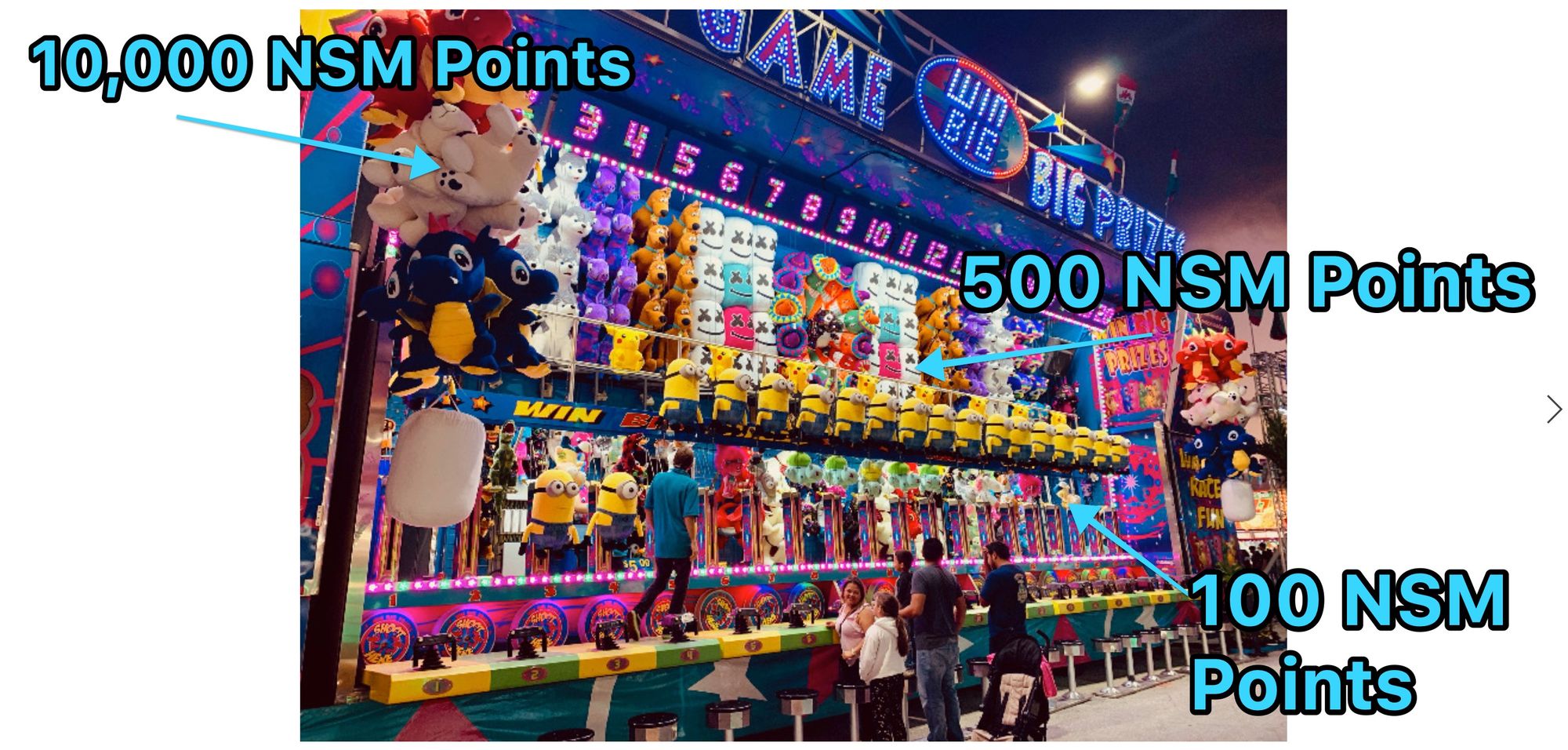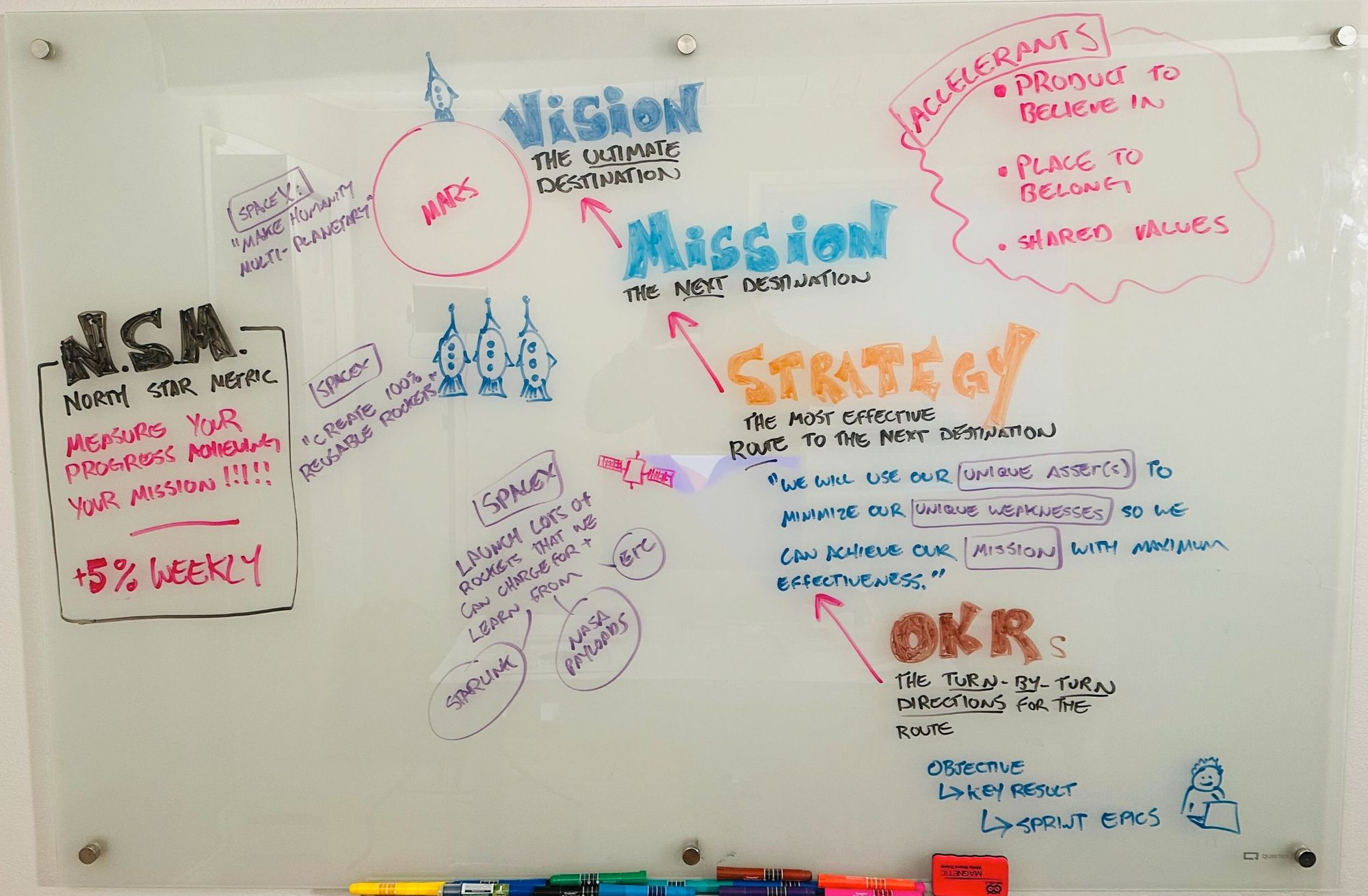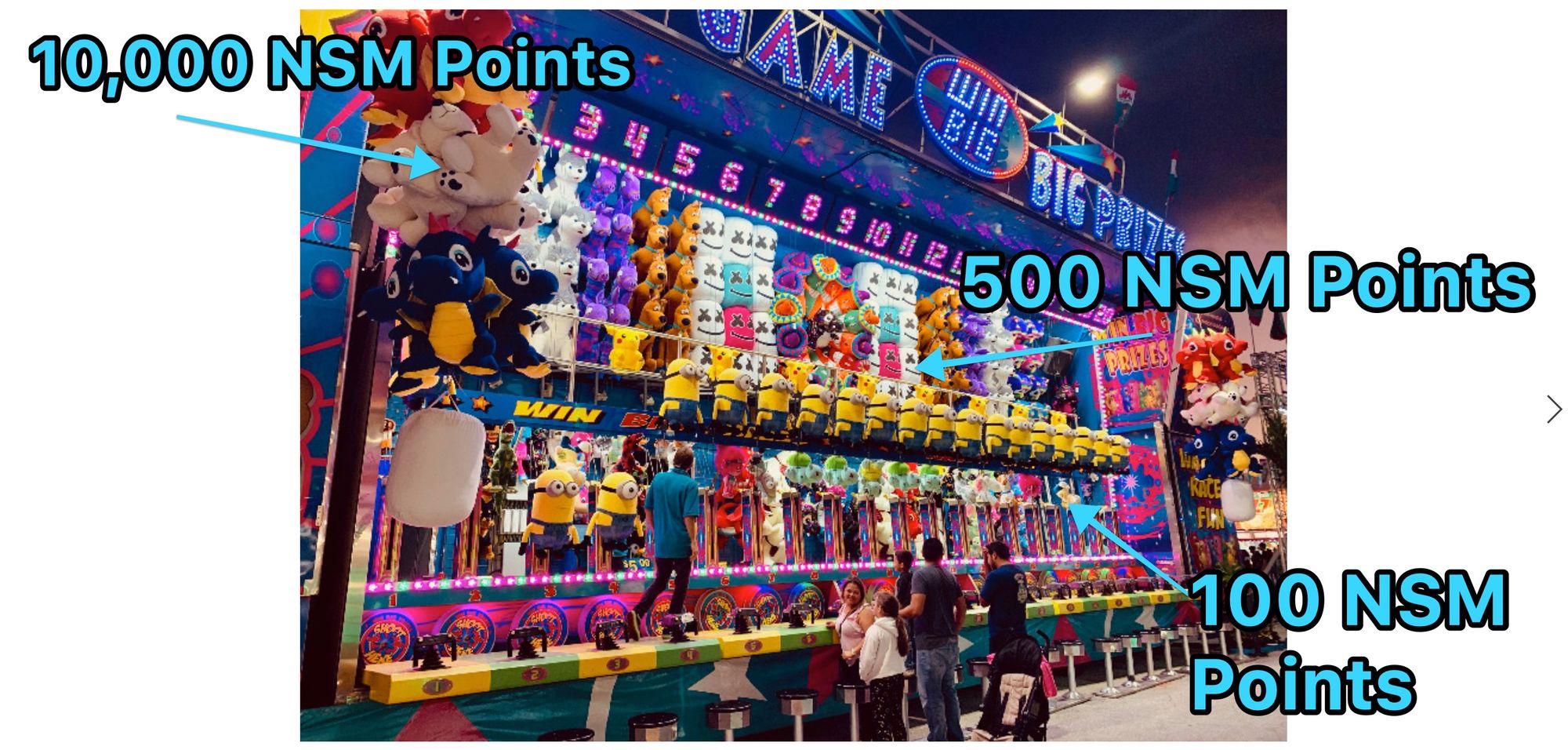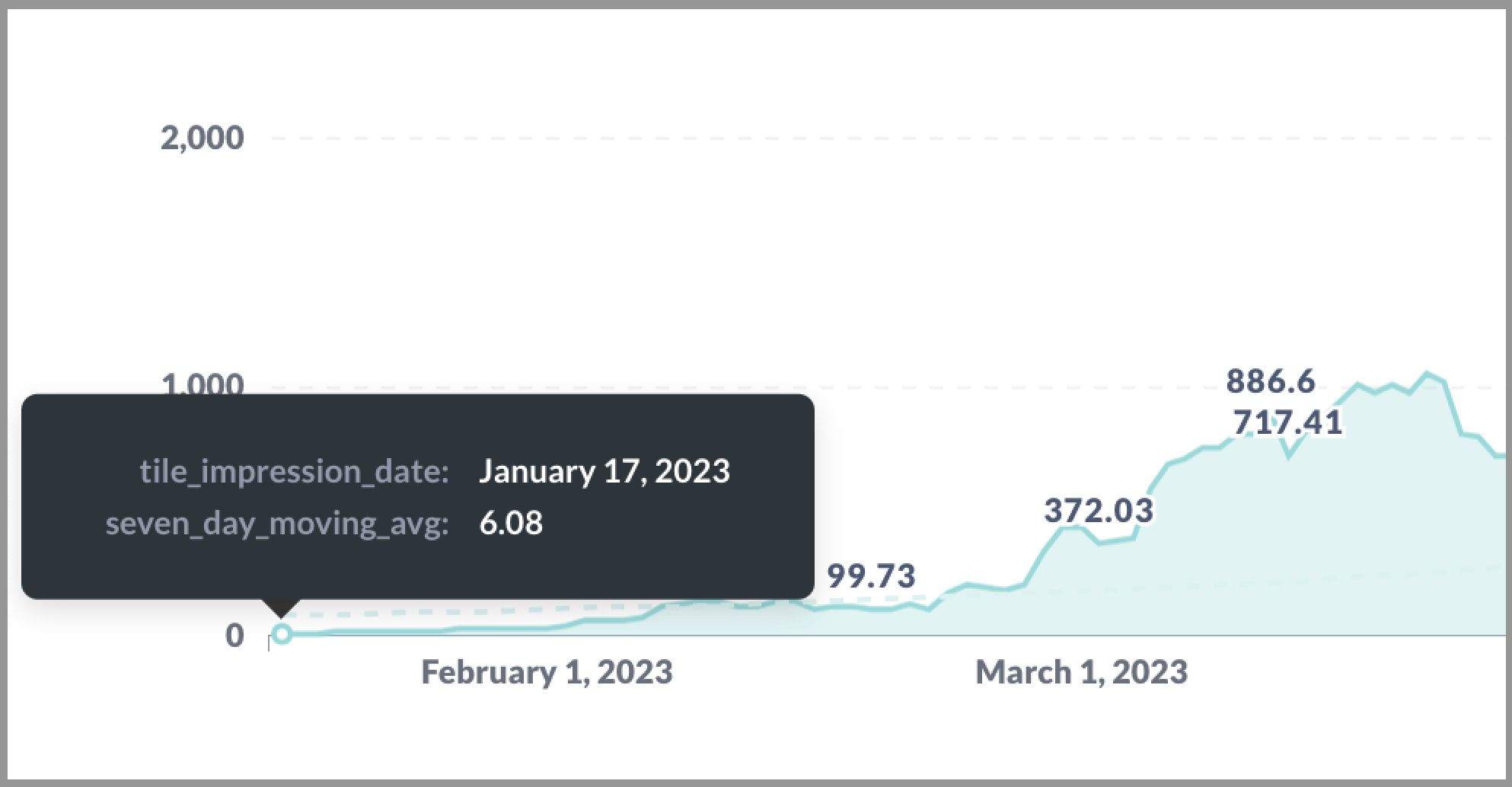Aligning our Humans: 🚀 Storytell's "Operation 50,000"

When Jing, Erika and I founded Storytell.ai late last year, we knew we had a special opportunity to define a big Vision, a strong Mission, and a winning Strategy to leverage AI in ways that makes us more effective and satisfied with how we each live, how we work, and how we play.
But what do these terms mean? How are we tracking our progress? And most importantly, how are we aligning our entire Storytell Crew to get there together?

Setting a "Vision":
We define a company's Vision as its ultimate destination. This is our multi-decade journey. The reason the company exists. I find that the Vision of a company rarely changes – usually the Founders had a reason for starting the company; something they wanted to bring into the world that didn't previously exist.
I imagine that SpaceX would define its Vision as Make Humanity Multi-Planetary.For Storytell, our Vision is to Distill Signal from Noise. This is why Storytell exists. Everything we do is in service of this Vision. Humans can't be effective if they don't understand what's important vs. what's not in their lives, and if they don't get that signal at the right point in time to be useful.
Setting a "Mission":
If a Vision takes decades to achieve, where do you start? The answer to this question is what we define as the "Mission." This is a subset of the overall Vision. Your starting point. Or if you've already started, your next stop on the road to achieving your Vision. Think of it as "the best way we currently know of to get to our ultimate destination."
I imagine that SpaceX would define its Mission as Create 100% reusable rockets. This is the best way it knows of to make humanity multi-planetary.For Storytell, our Mission is to Create, recommend and transform Story Tiles™. Story Tiles™ are the building blocks of Storytell – everything you experience with Storytell is powered by Story Tiles.™ A Story Tile™ is the smallest "atomic unit" of a piece of content -- a discrete concept that we package up with metadata into a Story Tile.™
Defining a "Strategy":
A company's strategy is its most effective route to that next destination. A good strategy demands that you make a choice to move in one specific direction. There are many frameworks for defining strategies, like "Where to Play" and "Winning Aspirations.".
I imagine that SpaceX would define its strategy as Launch lots of rockets what we can charge for and learn from, like for Starlink and NASA payloads. This means that SpaceX isn't creating Starlink just to bring internet to the world, but mainly because it's a business that allows them to get really good at achieving their current Mission of creating 100% reusable rockets, which in turn is helping them achieve their ultimate Vision of making humanity multi-planetary.Storytell doesn't publish its strategy in-depth, but we do reference it at a high level on our Vision page.
There's a lot more content about Vision, Mission and Strategy in the FounderCulture knowledgebase, including: Motivating with Vision: Investors, Employees & Customers, Mistakes Founders Often Make with Vision, Mission & Values and Foundation of "How to Win:" Translating Your Vision & Mission into Strategy and OKRs

Tracking Progress:
How do you track your progress against these initiatives? How do you know every day if you're getting closer or further away from achieving your Vision? At Storytell we've created a North Star Metric (NSM). It's a formula with a number of variables but ultimately, it's very simple:
Storytell NSM = (How much of the world is using Storytell) x (How deeply are they using it)
Or to put it another way, what is our breadth of usage across all users, and what is our depth of usage by each user?
We've calculated our NSM this way because we know we won't achieve our Vision if we only have a lot of breadth (the entire world uses Storytell... just once) or if we only have a lot of depth (Our users use Storytell multiple times every single day... but there's only one user). We need both. This drives us to build features that create depth of usage (like VirtualMe™ and subsequently SmartChat™) as well as breadth of discovery, like sharing Storytell reports.
What is a "win" and how does it impact the NSM?
Internally, our Storytellers differentiate between learnings, good news and wins when we're sharing updates with each other. Here's a post about why this matters so much (especially in a learning environment).
Wins are external validation that we can't make up ourselves. We think of wins as how much they are impacting our NSM. When a Storyteller shares a "win" internally, we ask "How much did we win?!" Just like you can win different sized prizes at a carnival, we can bucket the size of each win based on its impact on our NSM.
Before we even started Storytell, in the summer of 2022, we set a goal to have formed a company and hired our first employee by the end of the year. And we did it.
When we started tracking our NSM on January 17, 2023, it was 6.08. And we set a goal to have an NSM that would go up by at least 5% per week by March of 2023. We did that, too.

Then, in March of 2023 at our San Diego, CA user rapid prototyping offsite, we set a goal that our NSM would be 3,704 by July – something that felt completely unachievable at the time. Here's a video of me with the Storytell crew setting that goal on a beach in San Diego, CA in March:
We did that, too – at our Santa Rosa user rapid prototyping offsite in August, we announced that we'd hit 5,350.51.

We also set a new goal: 50,000 – a 10x in our NSM by January 31,2024. Something that, even now as I write this, feels equally unachievable. Here's a video of us setting that goal together at the offsite:
The Storytell Founders review our NSM every morning. Our new goal means that our dashboard has a lot of whitespace in it, because we're far from 50,000:

But if I know one thing about the Storytell Crew, it's that we'll find a way to get there. And having a common objective via one singular metric really helps us focus. It drives our feature prioritization, our shipping velocity, and it unites us together as a Crew. Here's to "🚀 Storytell: Operation 50,000!"
The SF Storytell Crew bringing it "all in" together during a Build Day